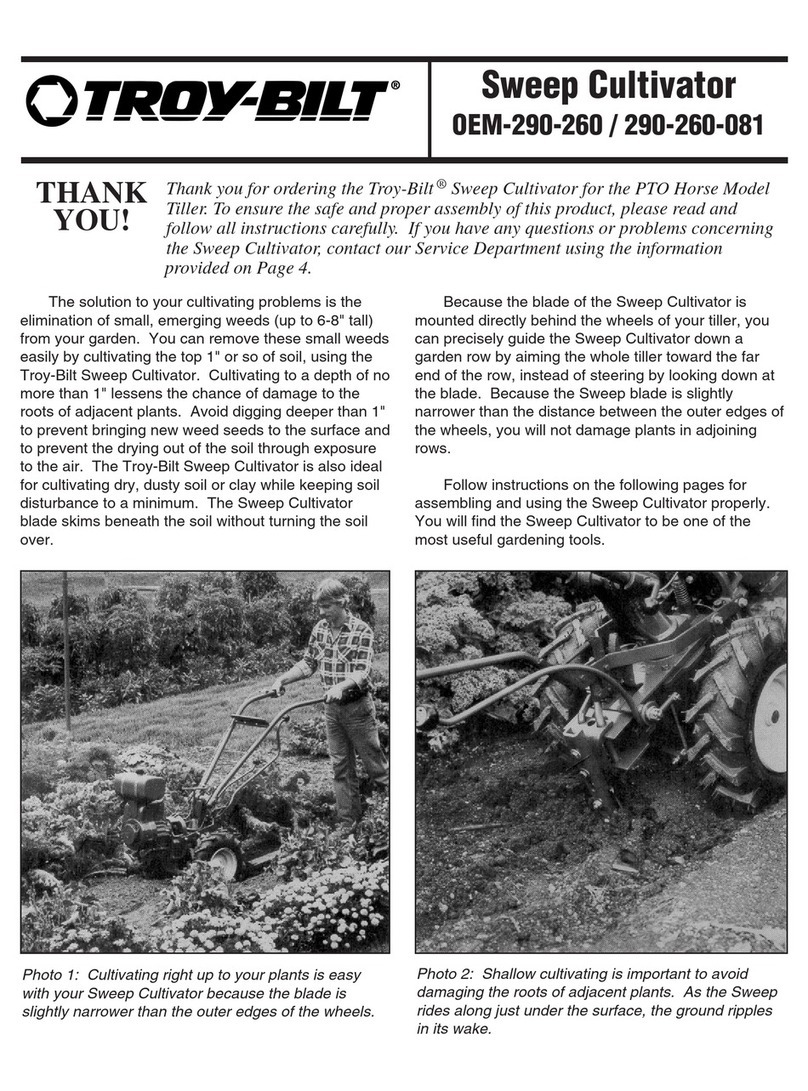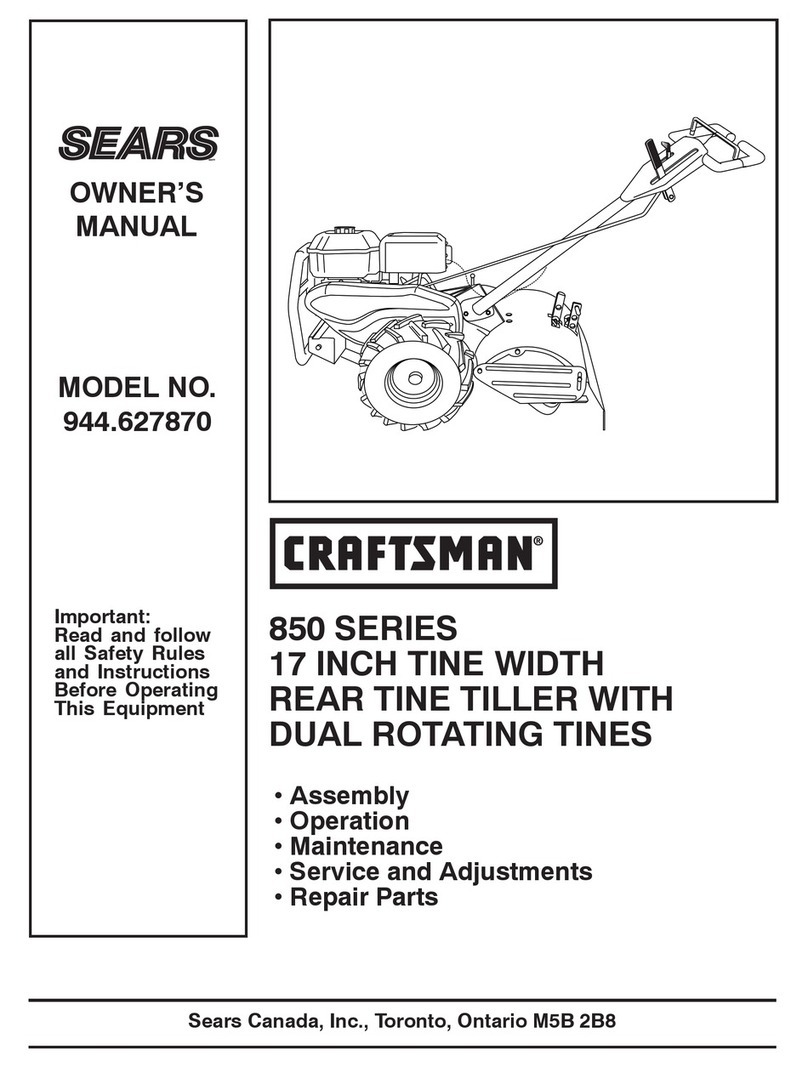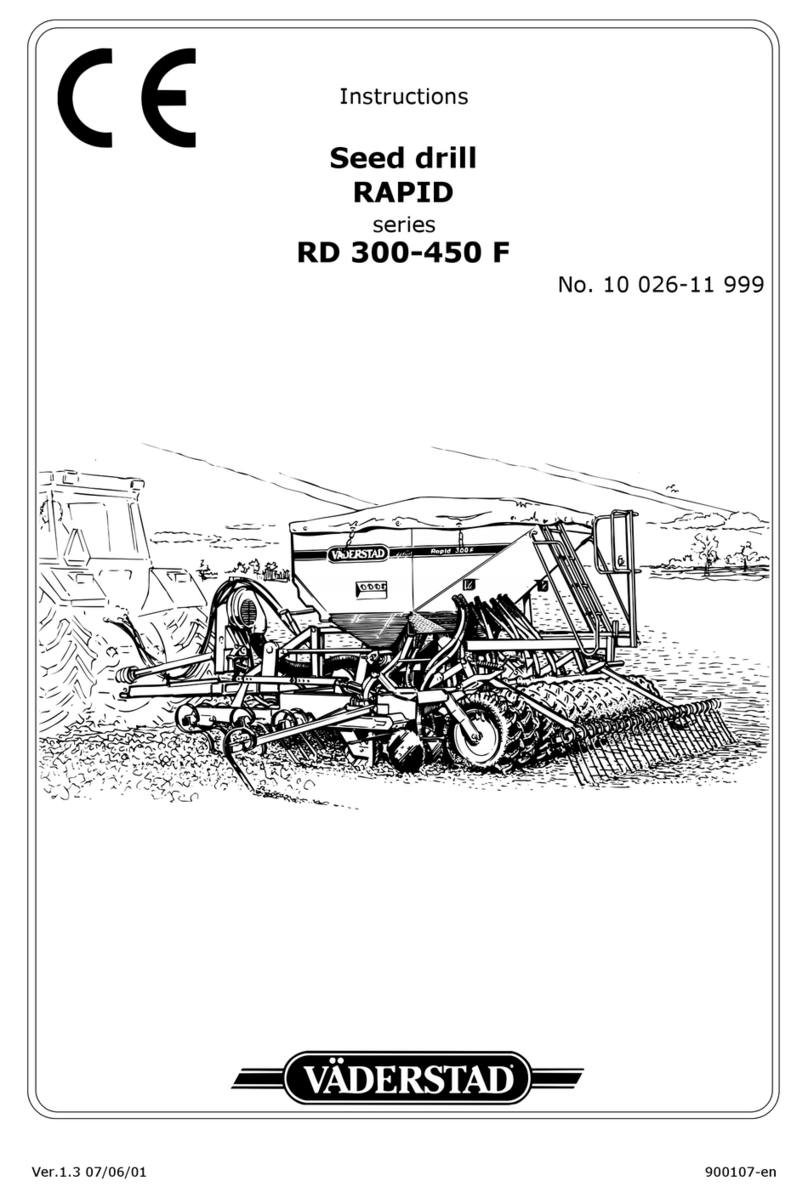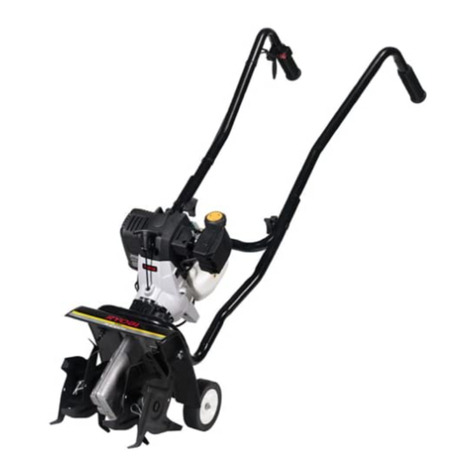
Ver.3 29/06/07 3
1 Safety regulations
1.1 Before using the drill ............................................................................ 6
1.2 arning decals ................................................................................... 6
1.3 Other safety precautions ...................................................................... 8
1.4 Location of warning decals on the machine ............................................. 9
1.5 Data plates ......................................................................................... 9
2 Instructions and settings
2.1 Tractor ............................................................................................. 10
2.2 Inspecting the drill's towing eyelet ....................................................... 11
2.3 Installation of the Control Station on the tractor .................................... 12
2.4 Hitching and unhitching the seed drill ................................................... 13
2.5 Adjusting hose length and connecting intermediate cable ........................ 15
2.6 heel retraction mechanism ............................................................... 16
2.7 Switching between transport and working modes ................................... 18
2.8 Horizontal alignment .......................................................................... 20
2.9 Adjusting sowing depth ...................................................................... 22
2.10 Adjusting weight transfer .................................................................... 23
2.11 Adjusting the changeover valve ........................................................... 24
2.12 Adjustment of the pre-implements ....................................................... 25
2.13 Setting the radar ............................................................................... 29
2.14 Setting the seed rate, mechanical feed output ....................................... 30
2.15 Seed box settings with hydraulic feed output ......................................... 30
2.16 Calibration, mechanical feed output ..................................................... 31
2.17 Calibration, hydraulic feed output ........................................................ 33
2.18 Prior to filling the hopper .................................................................... 38
2.19 Operation test ................................................................................... 40
2.20 Emptying the seed hopper .................................................................. 40
2.21 Adjusting the air-flow ......................................................................... 41
2.22 Control station .................................................................................. 42
2.23 Tramlining ........................................................................................ 56
2.24 Adjusting the pre-emergence bout marker ............................................ 57
2.25 Adjusting the following harrow ............................................................ 58
2.26 Adjusting Low lift height ..................................................................... 59
2.27 Locking the lifting rams during service .................................................. 59
2.28 Adjusting the seed coulters ................................................................. 60
2.29 Scraper ............................................................................................ 62
2.30 Bout marker adjustment ..................................................................... 63
2.31 Track eradicators, tines (option) .......................................................... 63
2.32 Track eradicator, System Disc ............................................................. 64
2.33 ing packers (option) ........................................................................ 64
Advice on sowing
3.1 Sowing depth .................................................................................... 65
3.2 Checking the seed feed ...................................................................... 66
3.3 Sowing headlands ............................................................................. 67
3.4 Engaging the drill .............................................................................. 68
3.5 Tramlining ........................................................................................ 68
3.6 Bout markers .................................................................................... 68
3.7 Obstructions ..................................................................................... 69
3.8 Turning with Low lift .......................................................................... 69





























